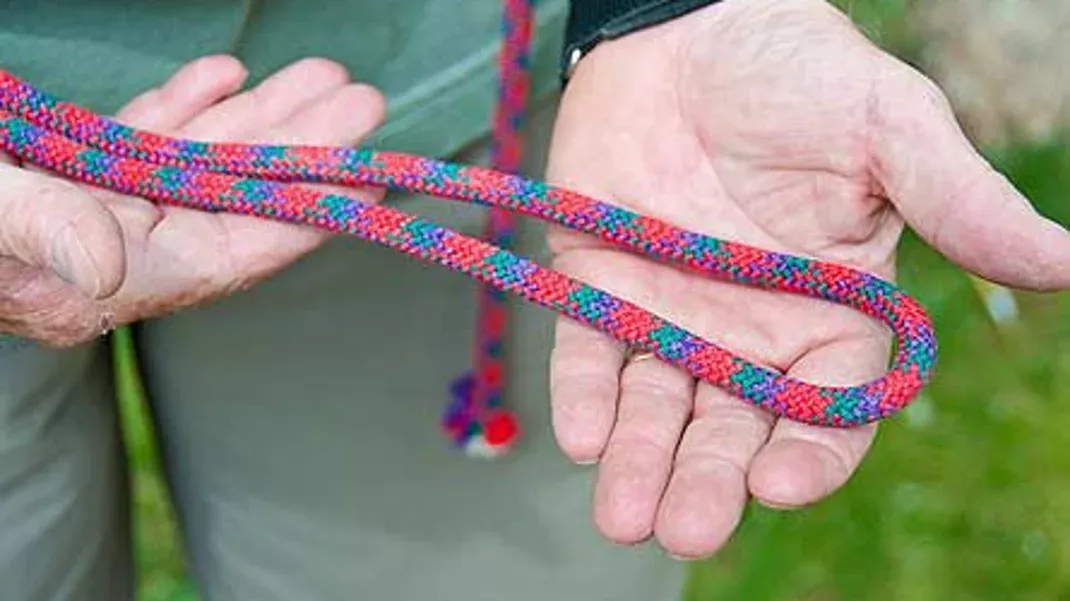Fit to Be Tied: Four Common Knots Every Hiker Should Know
"Fit to Be Tied: Four Common Knots Every Hiker Should Know" is a comprehensive guide for hikers looking to improve their knot-tying skills. The book covers four essential knots that every hiker should be familiar with, including the figure-eight knot, the taut-line hitch, the bowline knot, and the clove hitch. Each knot is broken down into easy-to-follow steps and accompanied by clear illustrations, making it easy for hikers of all skill levels to learn and practice these essential knots. Whether you're a beginner looking to improve your outdoor skills or a seasoned hiker wanting to brush up on your knot-tying abilities, "Fit to Be Tied" is an indispensable resource for anyone hitting the trails.

Fit to Be Tied: Four Common Knots Every Hiker Should Know
When it comes to hiking, being prepared is key. Whether you're setting up camp, securing gear, or creating a makeshift clothesline, knowing how to tie a variety of knots can be incredibly useful. In the world of hiking and outdoor activities, there are countless different knots that can be used for various purposes. However, there are four common knots that every hiker should know. These knots are versatile, reliable, and easy to learn, making them essential for any outdoor enthusiast.
The square knot, also known as the reef knot, is one of the most basic and useful knots for hikers. It is commonly used to join two ropes of the same diameter, making it ideal for tying together the ends of a tarp or securing a bandage. To tie a square knot, start by laying one rope over the other to form an "X." Then, bring the end of the top rope under the bottom rope and through the loop created by the "X." Next, bring the bottom rope over the top rope and through the loop. Pull the ends of both ropes tight to secure the knot. The square knot is easy to tie and untie, making it a great option for a variety of purposes while hiking.
The bowline knot is another essential knot for hikers, as it creates a secure loop at the end of a rope. This knot is particularly useful for securing a line to a tree or post, or for creating a loop to attach gear. To tie a bowline knot, start by forming a small loop near the end of the rope. Then, pass the end of the rope through the loop, around the standing part of the rope, and back down through the loop. Pull the end of the rope to tighten the knot, creating a secure loop that will not slip or loosen under pressure. The bowline knot is easy to tie and untie, making it a versatile choice for hikers in need of a secure loop.
The taut-line hitch is a valuable knot for hikers who need to adjust the tension of a line, such as a tent guy line or clothesline. This knot can be easily adjusted and will hold its position under tension, making it ideal for situations where the length of a line may need to be altered. To tie a taut-line hitch, start by wrapping the rope around a fixed object, such as a tree or stake. Then, bring the end of the rope inside the loop and wrap it around the standing part of the rope, crossing over the original wrap. Finally, pass the end of the rope through the loop again and pull it tight to secure the knot. The taut-line hitch is a reliable and easy-to-adjust knot that every hiker should know.
The trucker's hitch is a powerful knot that can be used to create a significant amount of mechanical advantage, making it ideal for securing heavy loads. This knot is commonly used to tie down gear on a vehicle or create a secure anchor point for a tarp or tent. To tie a trucker's hitch, start by tying a simple slip knot near the end of the rope. Then, create a loop in the standing part of the rope and pass the end of the rope through the loop. Pull the end of the rope to create a second loop, then pass the end of the rope through this loop as well. Finally, pull the end of the rope tight to create a secure and adjustable knot. The trucker's hitch is a valuable knot for hikers who need to secure heavy loads or create a secure anchor point.
In conclusion, the four common knots every hiker should know are the square knot, bowline knot, taut-line hitch, and trucker's hitch. These knots are versatile, reliable, and easy to learn, making them essential for any outdoor enthusiast. Whether you're setting up camp, securing gear, or creating a makeshift clothesline, knowing how to tie these knots can be incredibly useful. By mastering these basic knots, hikers can be better prepared for the challenges of the great outdoors and ensure that they can secure their gear and equipment with confidence.






